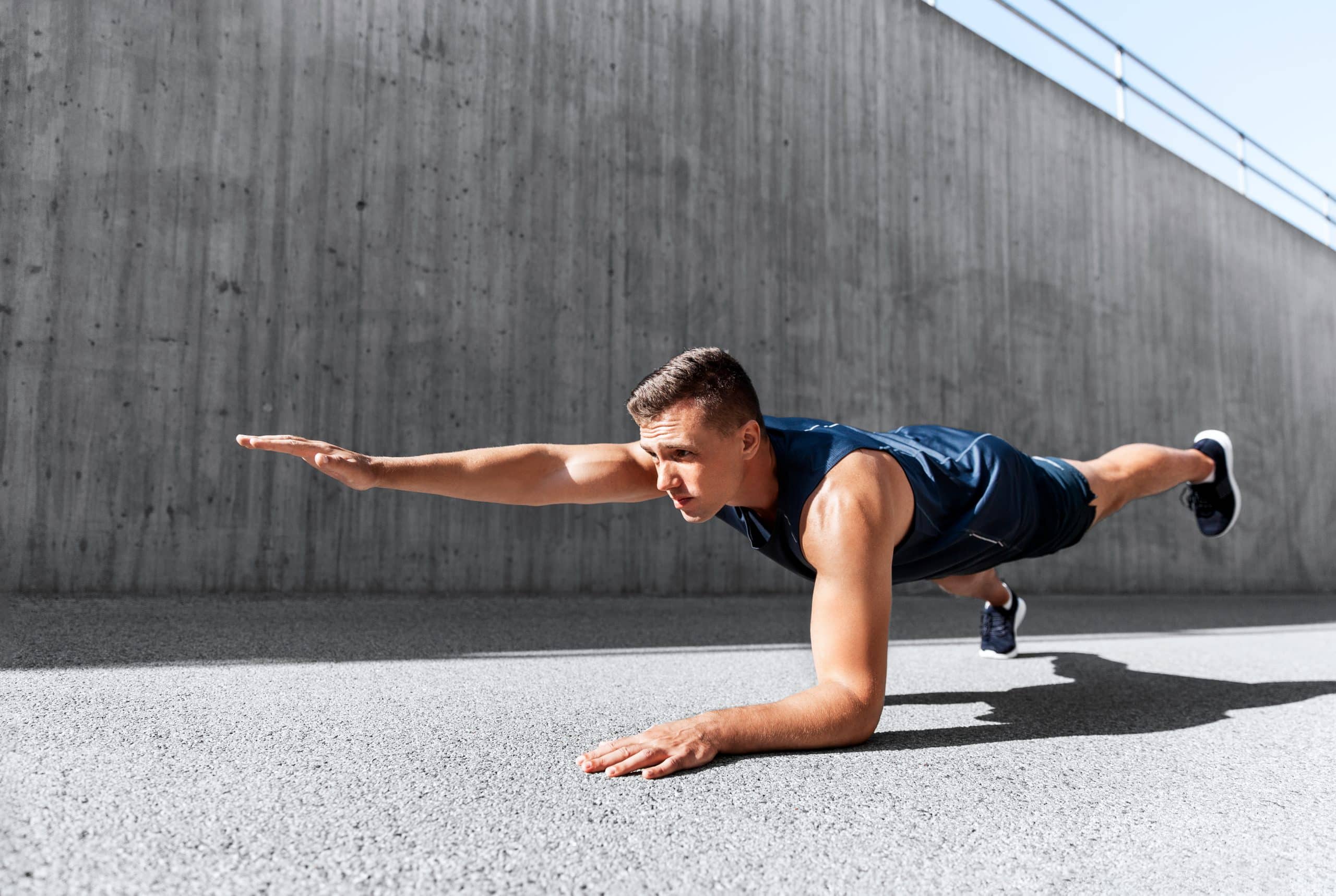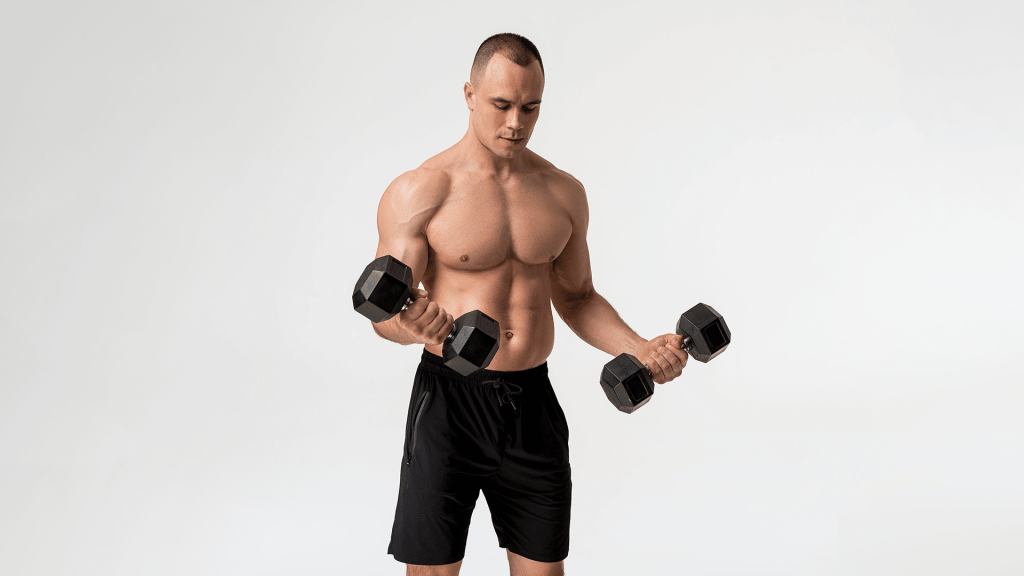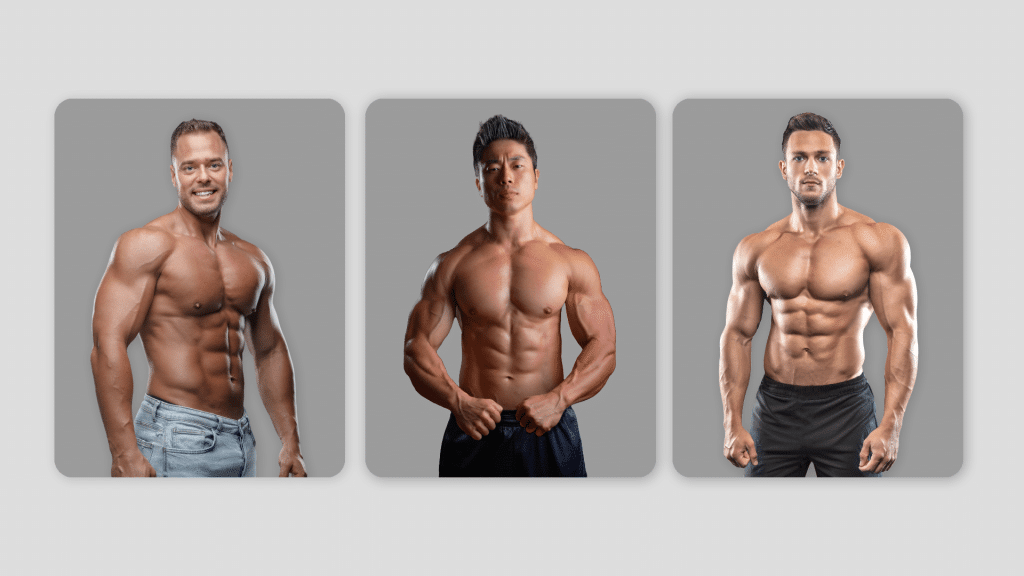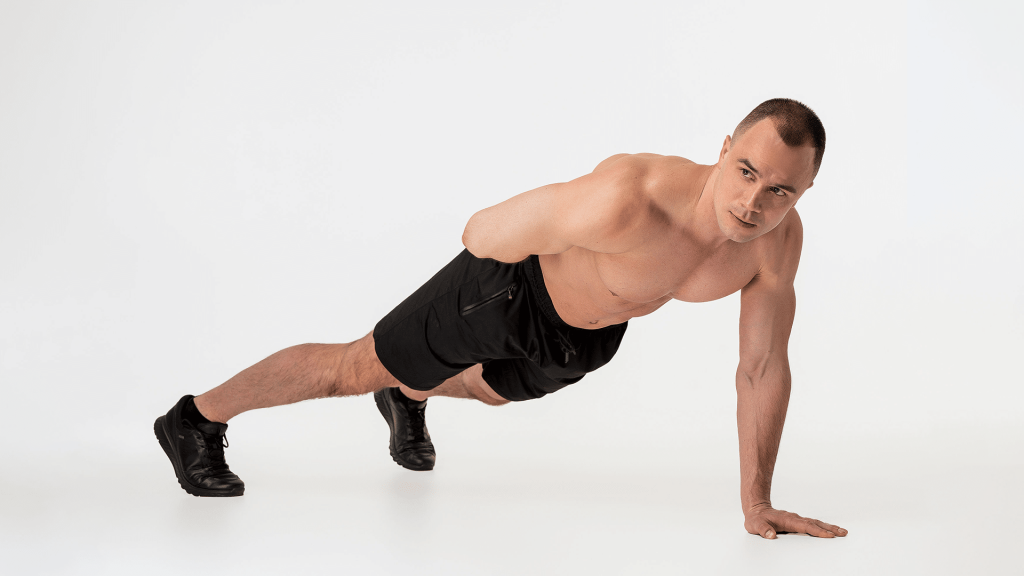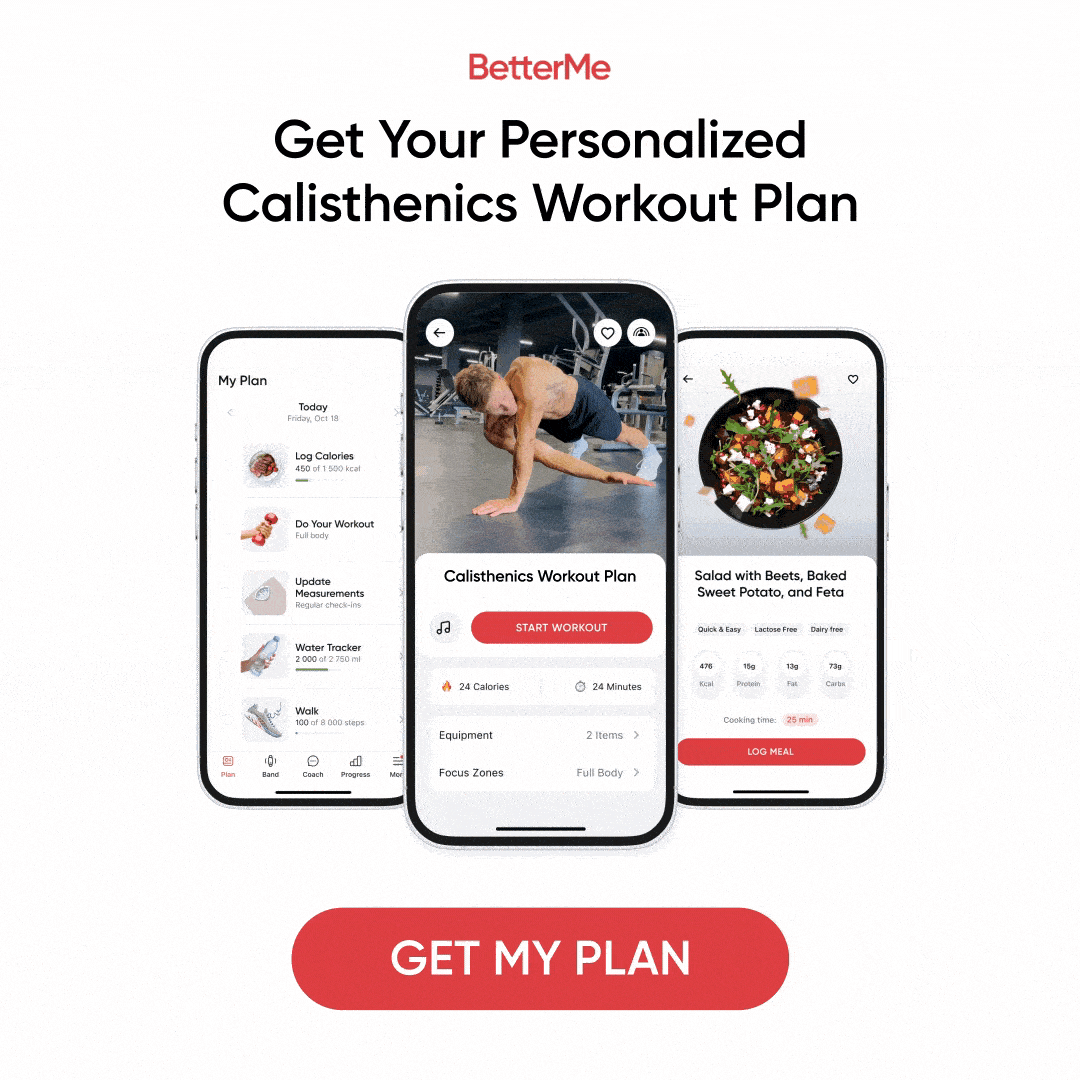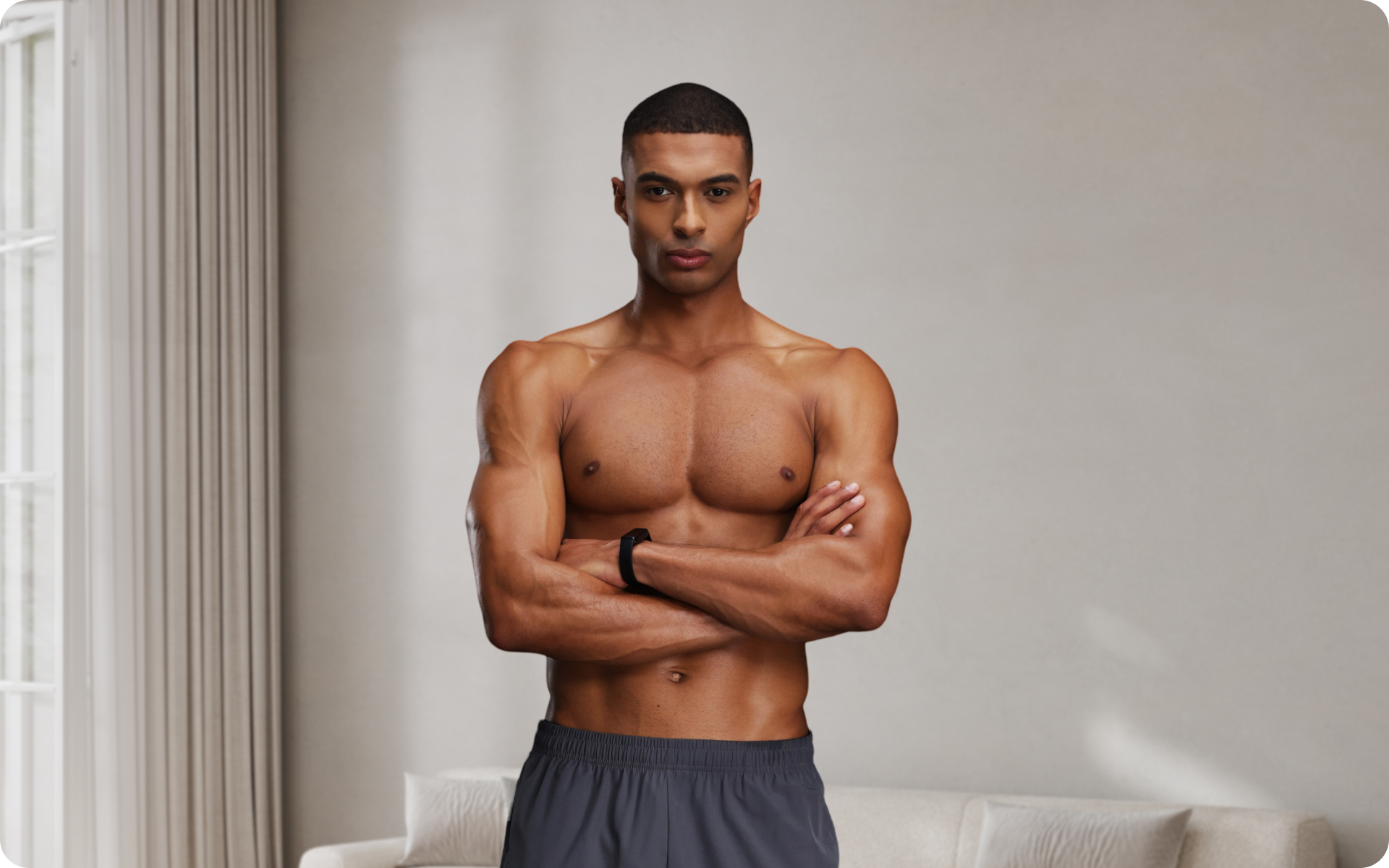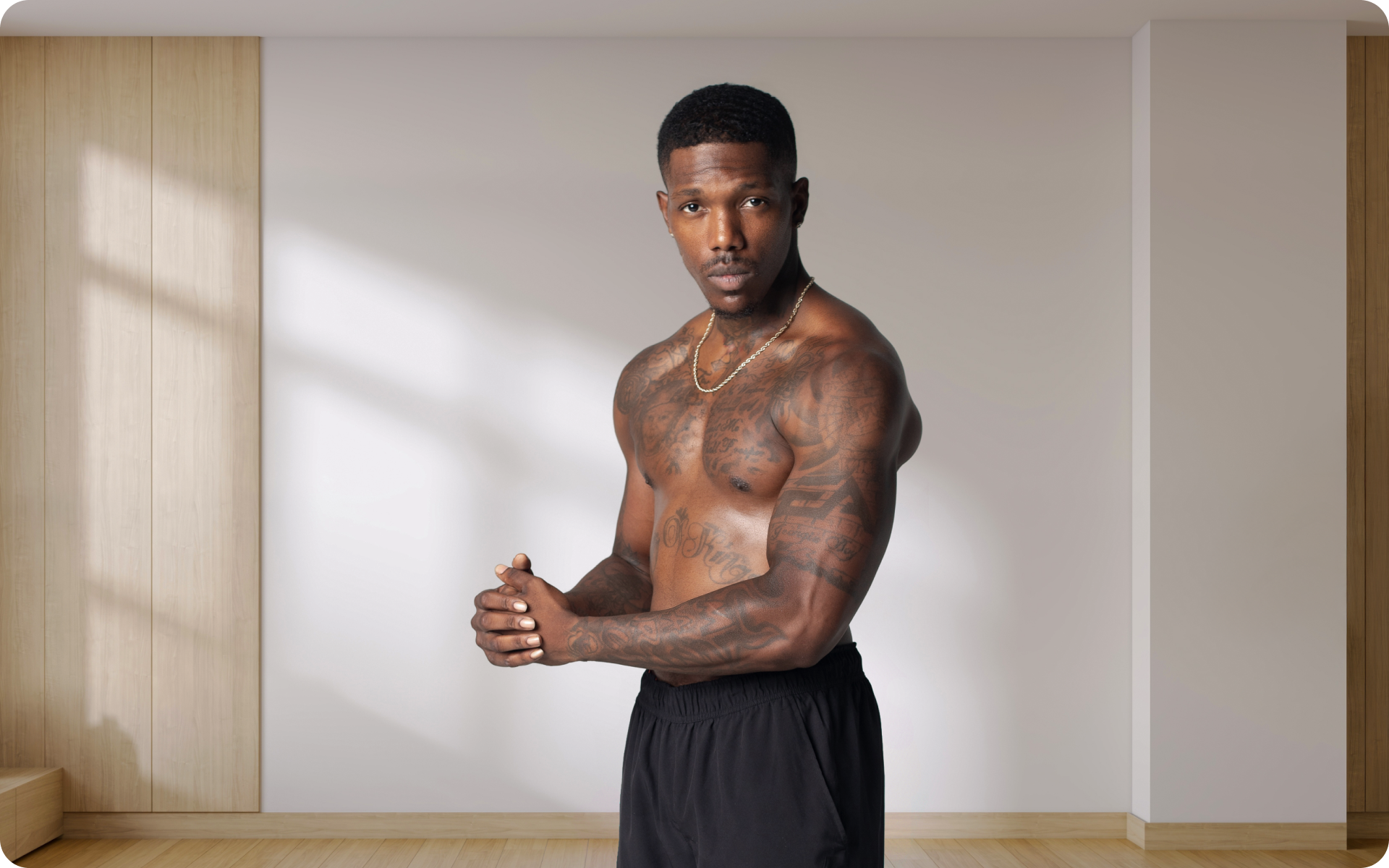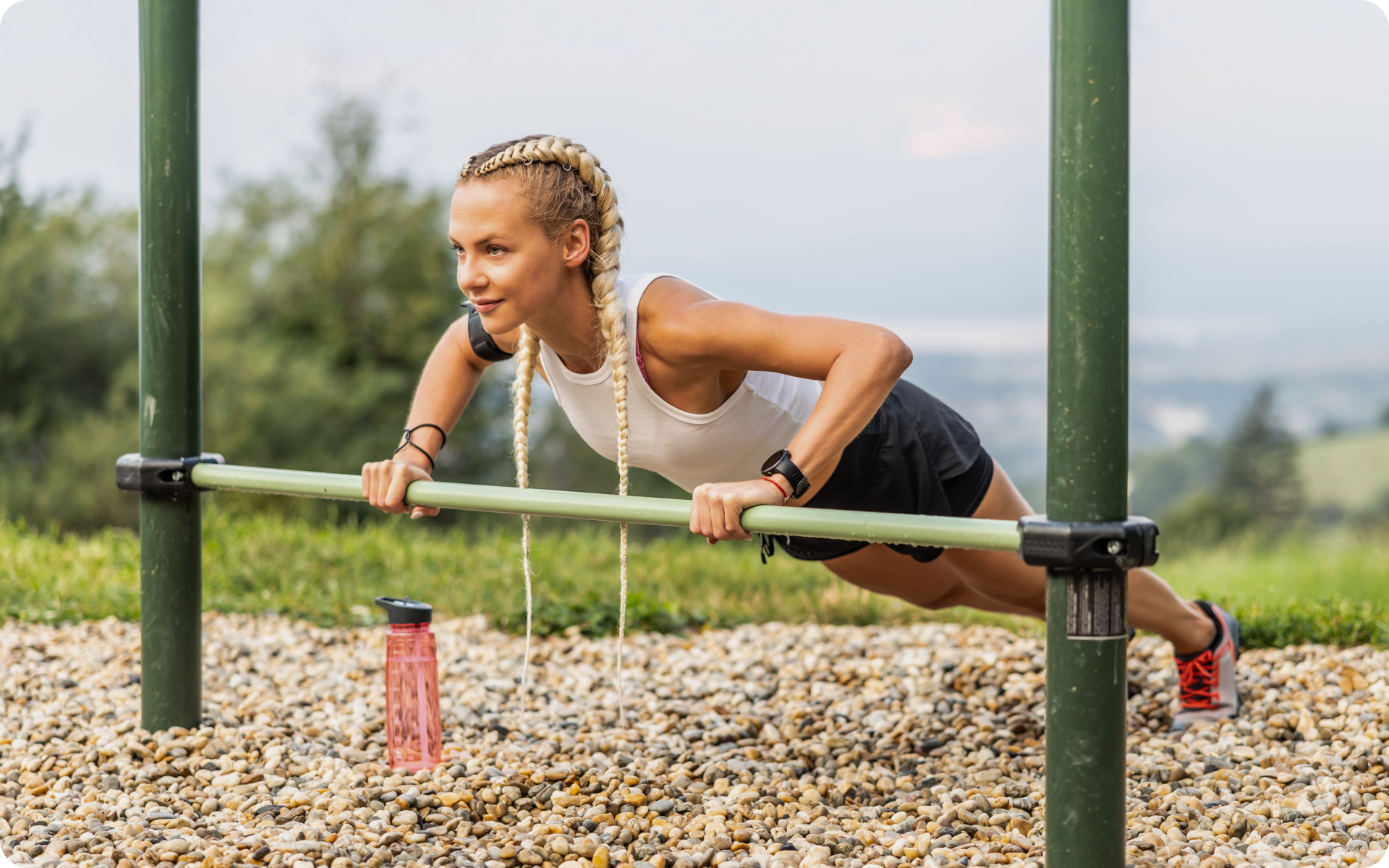Have you ever considered doing calisthenics arm workouts to help build up your arm? When it comes to building larger, more pronounced muscles, many people start thinking about hitting the weights.
All well and good, but what if we told you that you can achieve the same results (or even better) by simply doing bodyweight workouts? What if you could achieve the same results as your favorite fitness influencer without having to lift free weights or deal with complicated gym machinery?
Read on to find out how calisthenics arm workouts can help you achieve this as well as simple workout sets to try out today!

Can You Build Arms With Calisthenics?
Yes, you can. Calisthenics arm workouts are a great, often cheaper way to build stronger and larger arms.
For those unfamiliar with this type of exercise, calisthenics is a form of strength training that uses a person’s body weight. These exercises often require little or no equipment. Calisthenics workouts involve the movement of large muscle groups in the body which helps improve coordination, flexibility, and strength.
What Is Arm Calisthenics?
Arm calisthenics are simply exercises that rely on your body weight and nothing else to build the strength and endurance of your arm muscles.
Is Calisthenics Good For Biceps?
Yes, it is.
If you choose bodyweight exercises that target the bicep muscles and do them with proper intensity, you can build both the mass and strength of biceps, without weights.
Bigger muscles are not the only benefits of doing calisthenics. Some other advantages of this kind of strength training include:
- Beginner friendly – Calisthenics exercises often use movements that we see and do in everyday life. This makes it easier for beginners to quickly grasp the basics and do the workouts.
- Can be done anywhere – Not everyone has the time to head out to the gym. Because you do not need equipment, you can do calisthenic exercises anywhere. It is quite normal to see people do some variation of these exercises at a park, basketball or tennis court, the beach or their home.
- It’s cheap – You do not need to spend money on free weights or pay a gym membership to have access to said weights or machines. Some people do buy some equipment like jump ropes, a dip bar, a pullup bar or parallel bars and rings, but these are optional.
- Provide a full body workout – Calisthenics arm workouts are obviously isolation workouts that just target arm muscles. But there are multiple calisthenic workouts that target the whole body. You can also do isolation workouts for the legs, arms, and core in one session for a full body workout.
- Can improve your mental health – This is according to one study published in 2019. The study compared the effects of strength training and calisthenic training on the cognitive state, functionality, stability and general health of frail-aged institutionalized older adults.
At the end of the trial, researchers found that both strength training and the multi-calisthenics program helped improve and maintain health, cognitive state, functional independence and stability of the institutionalized older adults (5).
- Lower risk of back injury/pain – One observational study published in the Journal of Science and Medicine in Sport found that people who used weight machines to workout often reported experiencing low back pain.
These findings were in comparison to people who did calisthenics, preferred workout classes, or used free weights in their workouts (1).
- Can improve posture, body composition, and strength – One 8 week study done on male participants found that doing calisthenic workouts helped improve their posture, strength and body composition – All without the use of any major training equipment (4).
Another study, looking at the effects of these exercises on people with multiple sclerosis found that the group that did calisthenics had increased muscle strength especially in their upper bodies than another neurorehabilitation group. Calisthenics also helped reduce their anxiety and improved their balance (2).
- Can improve cardiovascular health – According to one study published in the Frontiers in Psychology, doing bodyweight high-intensity interval exercises could have the same cardiovascular benefits as running and other cardio exercises (3).
Some calisthenic exercises that can be done at such a high intensity include burpees, jump squats, mountain climbers, etc.
Read More: Mastering The Basics: A Beginner’s Guide To Shoulder Workout Calisthenics
Simple Calisthenics Arm Workouts With No Equipment
Here are some few examples of calisthenics arm exercises that you can do to help build larger arms.
The Bear Crawl
If you are looking for calisthenics for arms and chest, then the bear crawl is the perfect exercise to add to your routine. This workout targets the shoulders (deltoids), chest and back, glutes, quadriceps, hamstrings, and core muscles.
- Start by ensuring that you have ample space around you
- Get down on the floor in the standard pushup position.
- Keep the hands right under your shoulders, the back straight and your core engaged with the belly button pulled in towards the spine.
- Check the position of your legs. The feet should be hip distance apart.
- To crawl forward, move the right hand and left leg forward at the same time. Switch to the left hand and right leg to keep moving forward. Be sure that your knees do not touch the ground
- Keep crawling forward for a desired amount of steps or distance.
- Be sure to keep breathing and keep the core engaged throughout the exercise.
BetterMe App helps you achieve your body goals with ease and efficiency by helping to choose proper meal plans and effective workouts. Start using our app and you will see good results in a short time.
Pull ups
If large biceps are a goal for you, then pull ups are a great calisthenic bicep workout for you. Aside from working the biceps, they also target the forearms, shoulders and back. If you do not already have a pull up bar, you can simply improvise by using a towel.
- Get two sturdy towels and tie a knot on one end of each.
- Pick a door of choice and place these towels, knotted end over the door and close it.
The knots act as an anchor so that the towels do not slip. Pull down on the towels a couple of times to make sure they are secure and will not break mid workout.
Ps. find a door that is high enough that you can easily hang off it. If you have to step on a box or stool to get to the top of the door, all the better.
- Once you’ve made sure that the towels are secure, grab firmly onto the towels, inhale and pull yourself up as high as you can.
If you have been stepping on a box, grab the towels and step off, that way you are simply hanging on the door using the towels. Inhale and pull yourself up using just your arms
- To pull yourself up properly, keep your chin tucked – imagine holding something under the chin – pull the shoulder blades down and elbows into your body.
- Bring yourself as high as you can and pause at the top for about 2 seconds.
- Slowly lower yourself to start position by straightening your arms and allowing your shoulder blades to rotate upwards and move away from the spine.
- This counts as 1 rep. Do 10 to 12 reps for 1 set.
Door Frame Rows
If pull ups are too much for you, door frame rows (aka doorway rows) are fantastic calisthenics arm workouts beginner friendly options to try. These can help you build some upper body strength before attempting some pull ups.
- Stand in front of your doorway and grab both sides.
- Move your feet a little closer to the doorway and lean back.
- Sit back so you put weight on your arms. Keep your core engaged
- Pull yourself forward using your arms. Pause and then drop back to position iii
- This counts as 1 rep
- Do 8 to 12 reps to 1 set and a total of 2 to 3 sets for a full workout.
Door frame rows may seem easy for the first few reps, but the more you lean back, the harder it gets for your arms.
Push Ups
Like pull ups, push ups are fantastic calisthenics for building arms. It’s also important that push ups work more than just the arms. In fact, they are a full body workout that targets the chest, shoulders, and triceps and works your core, back, and legs.
Here’s how to do a standard pushup
- Get down on all fours, placing your hands slightly wider than your shoulders. Keep the elbows slightly bent (not straightened out) and your feet hip-width apart.
- Keep the core engaged
- On an inhale, lower your body until your chest nearly touches the floor.
- Pause, here for a second or two. On an exhale, use your arms to push yourself back up to start position.
- This counts as 1 rep. Do 10 reps for 1 set
Ps. Ensure that you keep your back is straight throughout the exercise. Do not arch your back or sag your midsection to the ground.
The standard push up can be hard for beginners. Knee push ups and wall push ups are a couple of simpler beginner friendly variations that you can do to work your way up to the standard version.
Read More: The Ultimate Calisthenics List Of Exercises For Every Level
How Do I Strengthen My Arms For Calisthenics?
If you have seen experts take part in calisthenic exercises or competitions, the whole experience can be impressive and daunting. However, if you want to be like them and build your arms and overall muscles to rival theirs, here are some things you can do
- Eat more protein – Muscle growth demands increased protein intake. For optimal muscle growth, try to consume between 1.2 and 1.6 grams of this macronutrient per kg of your body weight. Use a calorie calculator to figure out and track your protein intake.
- Consistency – The only way to build and strengthen muscle is to remain consistent. Continue doing your calisthenic arm exercises and you will see changes in no time.
- Progressive overload – This is a type of training that requires you to continuously increase the intensity of your workouts. Progressive overload helps prevent plateauing of both weight loss and muscle growth.
In weight lifting, progressive overload often means increasing the weights in your workouts every few weeks. Because we do not use weights in calisthenics, your progressive overload can mean:
- Increasing duration of workout session
- Increasing intensity of workouts done – i.e push yourself harder
- Increasing reps or sets of each workout
If you wish to free yourself from all the extra pounds that have been weighting you down for way too long, start using the BetterMe app and overhaul your entire life!
FAQs
Do Pushups Work Biceps?
No, while standard push ups are great calisthenics arm workouts, they do not target the biceps. However, there are some variations that can target this muscle.
They include
- Reverse Grip Push ups – In this variation, you do the exercise with your hands down and the fingers pointing towards your feet. The change in position of the hands forces the biceps to contract which gives them a workout.
- Close grip push ups – Unlike the standard push up where the hands are shoulder-width apart, in this variation, you push your hands together, leaving just a couple of inches between them. This allows you to target the biceps more directly.
- Single arm pushup – As the name suggests, this workout is done using just one arm, not both. The free hand is usually tucked behind your back. You are also required to spread your legs wider than the standard hip-width to help create more stability
Please note – while these variations make a great calisthenic bicep workout, they are not quite beginner (or even intermediate) friendly. Use other workouts to build your bicep strength and endurance before attempting the above push up variations.
Can Calisthenics Replace Weight Lifting?
Both forms of strength training have their benefits. It is recommended to combine both for the best and long term results
Do Dips Train Triceps?
Yes, they do. Dips usually target the triceps, chest and shoulders.
Can You Build Big Arms Without Weights?
As explained above, muscle mass, strength and endurance are among the many benefits of calisthenics. So, yes. You can absolutely build big arms without weights.
Are Bicep Rows Calisthenics?
The basic bicep rows are not calisthenic as they require the use of dumbbells or barbells. However, there is a way to modify them and make them a calisthenic workout. Inverted rows are a variation of this workout that, too, works the upper body.
Primary muscles worked include the lats, traps, posterior deltoids, rhomboids, and erector spinae. Secondary muscles targeted include the core, biceps, forearms, glutes, and hamstrings.
Here is how to do them:
Equipment – Horizontal bar
- Find a horizontal bar of appropriate hip height and lie down under it
- Take both arms and grab the bar. Your hands should be placed shoulder-width apart.
- Make sure that your body is at an inclined slope. Keep your entire body in a straight line by engaging your glutes and core.
- On an exhale use your arms and back muscles to pull your chest towards the bar. Hold for a second
- On an inhale lower yourself and return to the starting position. Lock your arms out at the bottom to ensure a full range of motion.
- This is 1 rep. Repeat this for 6 to 12 reps for 3 sets.
If you do have access to a horizontal bar, the same exercise can be done with a bedsheet.
- Take a bedsheet and tie a knot in one corner. Toss the knot over the top of a door, then shut the door. The knot should be on the opposite side of how the door closes.
- Grab the bedsheet in either hand, and carefully lower your body back until your arms are fully extended. Keep your feet pressed up against or close to the door. Make sure that your body is in a straight line
- To pull yourself up, squeeze your glutes and drive the elbows into the ground.
- Hold the pulled position for 2 seconds and the carefully reverse the motion lowering yourself back down until your arms are fully extended again
- This is one rep. Repeat for 8 to 10 reps for 1 set.
The Bottom Line
Calisthenics arm workouts are a fantastic and affordable way to build and develop your arm muscles without the use or need for a gym membership. With dedication, the proper diet and the right intensity, you will indeed build the arms of your dreams right there in your home.
DISCLAIMER:
This article is intended for general informational purposes only and does not serve to address individual circumstances. It is not a substitute for professional advice or help and should not be relied on for making any kind of decision-making. Any action taken as a direct or indirect result of the information in this article is entirely at your own risk and is your sole responsibility.
BetterMe, its content staff, and its medical advisors accept no responsibility for inaccuracies, errors, misstatements, inconsistencies, or omissions and specifically disclaim any liability, loss or risk, personal, professional or otherwise, which may be incurred as a consequence, directly or indirectly, of the use and/or application of any content.
You should always seek the advice of your physician or other qualified health provider with any questions you may have regarding a medical condition or your specific situation. Never disregard professional medical advice or delay seeking it because of BetterMe content. If you suspect or think you may have a medical emergency, call your doctor.
SOURCES:
- Are flexibility and muscle-strengthening activities associated with a higher risk of developing low back pain? (2014, pubmed.ncbi.nlm.nih.gov)
- Comparing routine neurorehabilitation programme with callisthenic exercises in multiple sclerosis (2011, pubmed.ncbi.nlm.nih.gov)
- The Acute Physiological and Perceptual Responses Between Bodyweight and Treadmill Running High-Intensity Interval Exercises (2022, frontiersin.org)
- The effects of a calisthenics training intervention on posture, strength and body composition (2017, researchgate.net)
- The effects of different types of physical exercise on physical and cognitive function in frail institutionalized older adults with mild to moderate cognitive impairment. A randomized controlled trial (2019, pubmed.ncbi.nlm.nih.gov)
